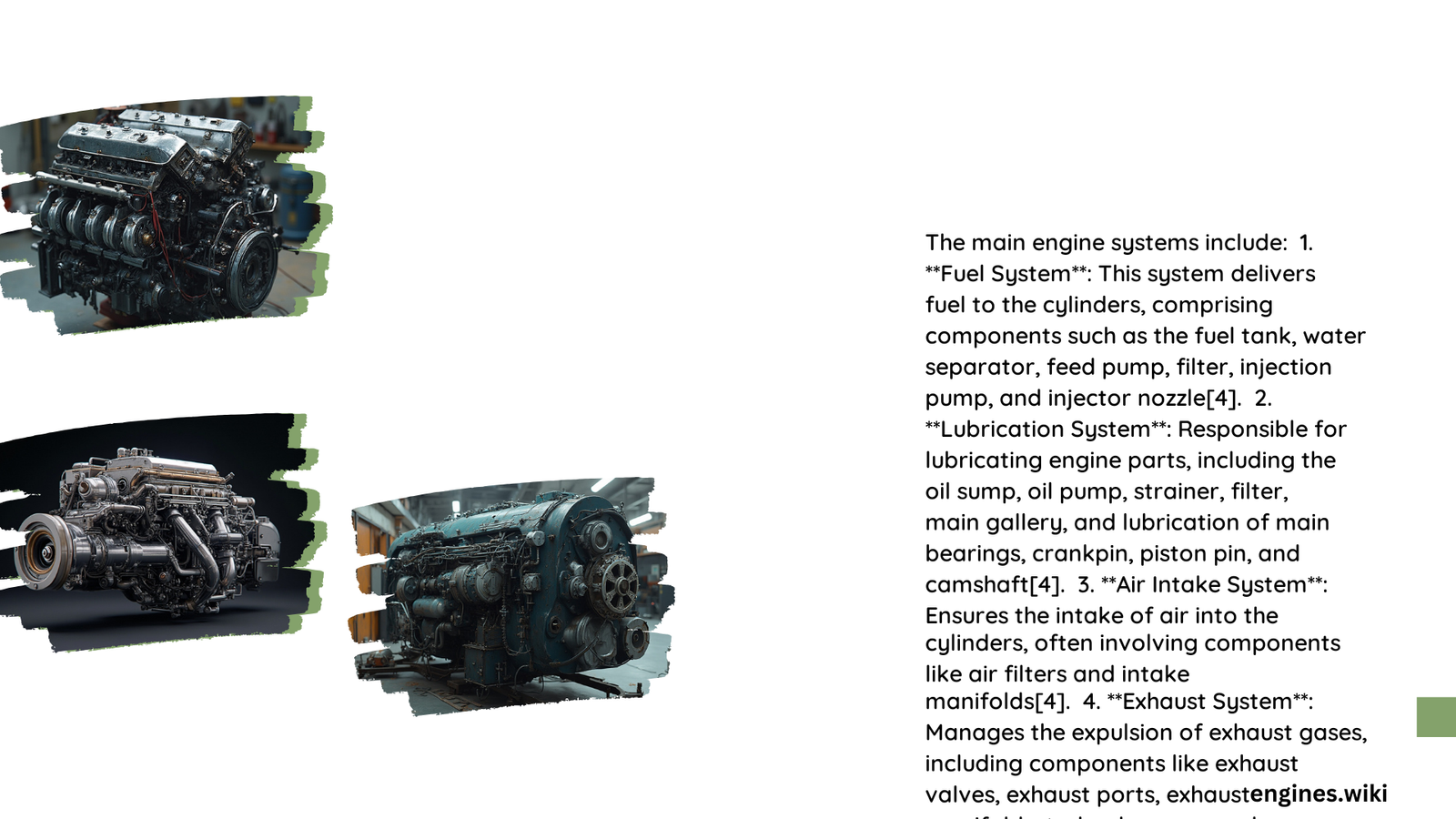Name the Main Engine Systems: A Comprehensive Exploration
Vehicle engines represent complex mechanical marvels comprising multiple interconnected systems working harmoniously to generate power, convert fuel into motion, and ensure optimal performance. Understanding these intricate systems provides crucial insights into automotive engineering, revealing how mechanical components collaborate to transform chemical energy into mechanical movement.
What Are the Primary Engine Systems?
Modern vehicle engines consist of several critical systems that work together to generate and transmit power. These systems include:
- Mechanical Core Systems
- Engine Block
- Cylinder Head
- Crankshaft
- Pistons
-
Connecting Rods
-
Operational Support Systems
- Fuel Injection
- Cooling System
- Lubrication System
- Electrical System
- Exhaust System
How Does the Engine Block Function?
The engine block serves as the fundamental structural foundation of the entire engine. Typically manufactured from cast iron or aluminum alloy, it provides critical housing for essential components:
| Component | Primary Function | Material Composition |
|---|---|---|
| Cylinders | Combustion chambers | Cast iron/Aluminum |
| Coolant Passages | Temperature regulation | Integrated channels |
| Crankshaft Bearings | Rotational support | Precision-machined surfaces |
Key Characteristics of Engine Blocks
- Supports multiple cylinders
- Provides structural integrity
- Facilitates coolant circulation
- Maintains precise dimensional tolerances
What Role Do Pistons Play?
Pistons are dynamic components that convert fuel’s chemical energy into mechanical motion. Their primary responsibilities include:
- Compressing air-fuel mixture
- Transferring explosive force to crankshaft
- Facilitating combustion process
- Maintaining precise reciprocating movement
How Does Fuel Injection Work?
Modern fuel injection systems represent sophisticated technological solutions for precise fuel delivery:
Electronic Fuel Injection Characteristics:
– Computer-controlled fuel metering
– Optimized air-fuel ratio
– Improved combustion efficiency
– Reduced emissions
What Comprises the Cooling System?
The cooling system prevents engine overheating through strategic heat management:
- Radiator: Dissipates thermal energy
- Water Pump: Circulates coolant
- Thermostat: Regulates temperature
- Coolant: Transfers heat
Electrical and Management Systems
Contemporary engines integrate advanced electronic control units (ECUs) that:
– Monitor performance parameters
– Adjust fuel injection
– Optimize ignition timing
– Manage emissions control
Technical Performance Metrics
| System | Performance Parameter | Typical Range |
|---|---|---|
| Fuel Injection | Pressure | 30-100 bar |
| Cooling System | Operating Temperature | 80-100°C |
| Combustion | Peak Temperature | 2000-3000°C |
Advanced Technological Considerations
Modern engine systems increasingly incorporate:
– Hybrid technologies
– Electrification components
– Advanced materials
– Computational fluid dynamics modeling
Conclusion
Understanding main engine systems provides profound insights into automotive engineering’s complexity. Each component plays a critical role in transforming chemical energy into mechanical motion with remarkable efficiency.

